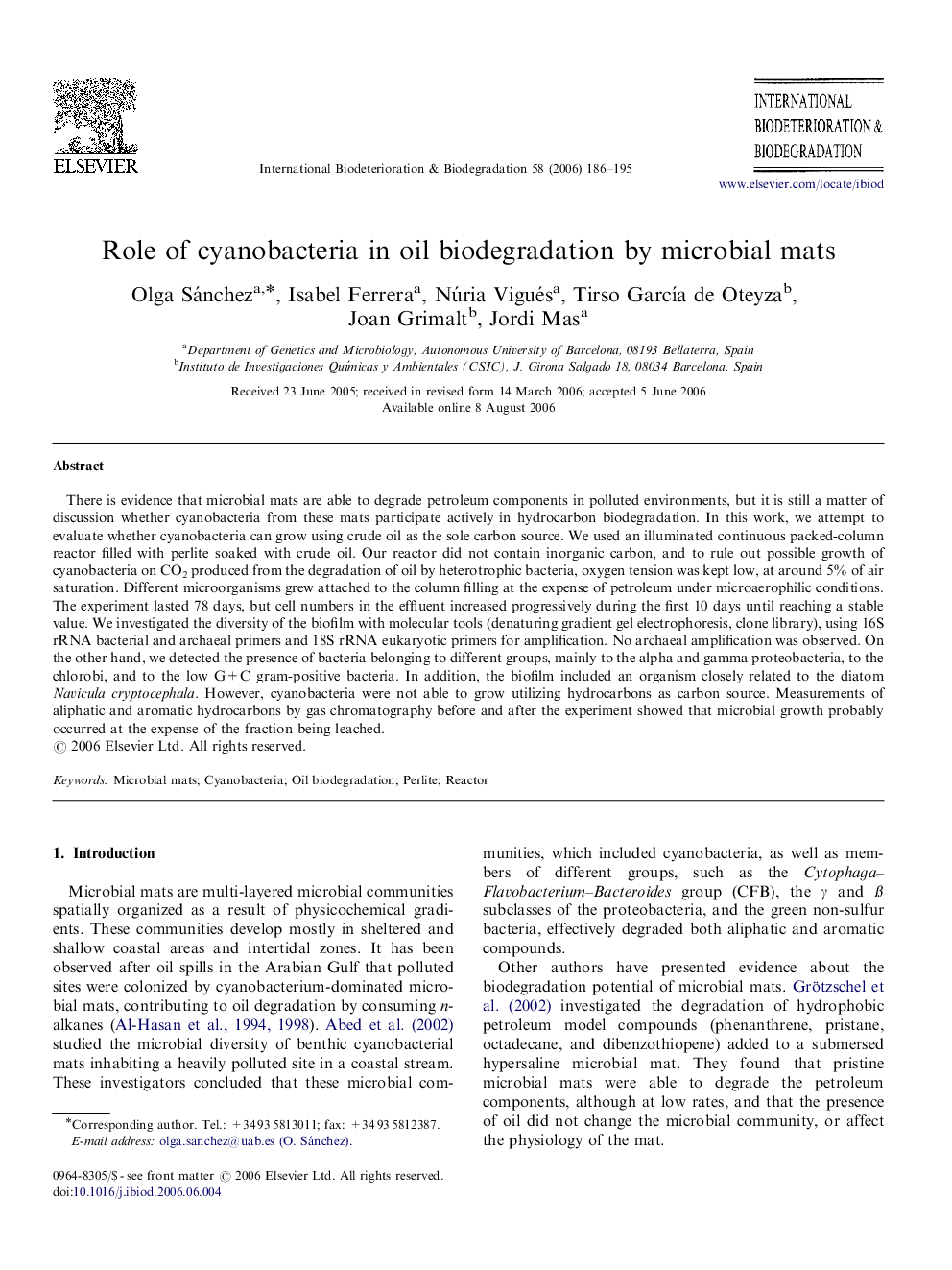| Article ID | Journal | Published Year | Pages | File Type |
|---|---|---|---|---|
| 4366048 | International Biodeterioration & Biodegradation | 2006 | 10 Pages |
There is evidence that microbial mats are able to degrade petroleum components in polluted environments, but it is still a matter of discussion whether cyanobacteria from these mats participate actively in hydrocarbon biodegradation. In this work, we attempt to evaluate whether cyanobacteria can grow using crude oil as the sole carbon source. We used an illuminated continuous packed-column reactor filled with perlite soaked with crude oil. Our reactor did not contain inorganic carbon, and to rule out possible growth of cyanobacteria on CO2 produced from the degradation of oil by heterotrophic bacteria, oxygen tension was kept low, at around 5% of air saturation. Different microorganisms grew attached to the column filling at the expense of petroleum under microaerophilic conditions. The experiment lasted 78 days, but cell numbers in the effluent increased progressively during the first 10 days until reaching a stable value. We investigated the diversity of the biofilm with molecular tools (denaturing gradient gel electrophoresis, clone library), using 16S rRNA bacterial and archaeal primers and 18S rRNA eukaryotic primers for amplification. No archaeal amplification was observed. On the other hand, we detected the presence of bacteria belonging to different groups, mainly to the alpha and gamma proteobacteria, to the chlorobi, and to the low G+C gram-positive bacteria. In addition, the biofilm included an organism closely related to the diatom Navicula cryptocephala. However, cyanobacteria were not able to grow utilizing hydrocarbons as carbon source. Measurements of aliphatic and aromatic hydrocarbons by gas chromatography before and after the experiment showed that microbial growth probably occurred at the expense of the fraction being leached.
